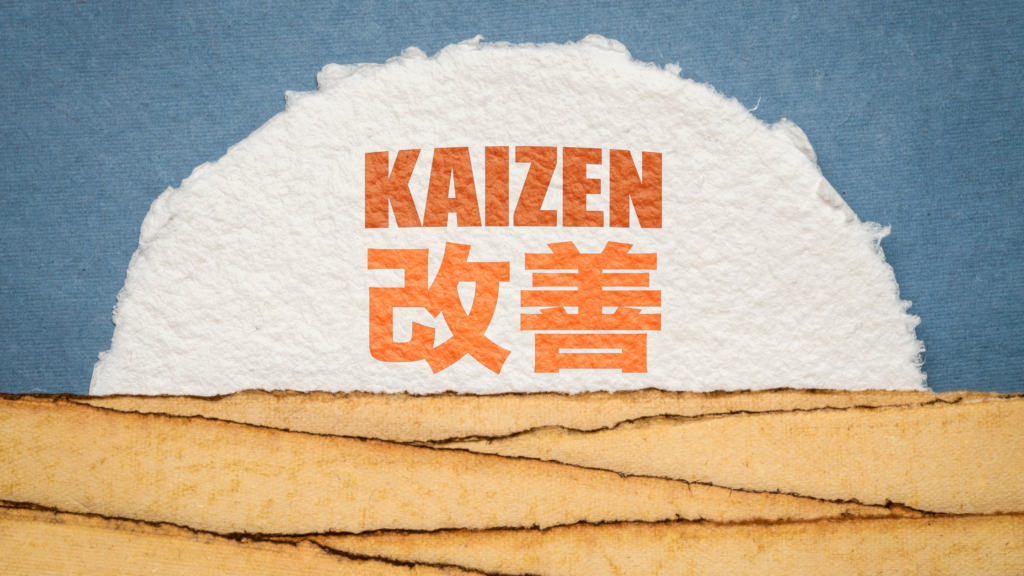Kaizen Application in your life involves making small, daily changes that accumulate over time for significant improvement. This concept, originating in manufacturing, demonstrates how incremental changes can lead to substantial positive impacts on profits.
This same strategy is often applied to weight loss, exercise, productivity, and finance.
But what about relationships? How can we apply this concept to one of the things that matters most in life?
Patterns
One piece of advice that any new couple should heed is this: be wary of the patterns and habits you fall into.
What many people don’t realize, is that relationships – like people – are very much habitual. The habits you set down early on in terms of the balance of power, or the roles each of you take on at particular times.
You shouldn’t therefore do something once early on in your relationship, unless it’s something you’re happy to continually do.
For example, if you pick your partner up from work on the way home once, this is very likely to become a habit. If your partner goes into another room one evening to work rather than watch TV with you, this is very likely to become a habit.
This is all fine as long as they’re things you’re happy with. The problem is breaking patterns and habits that you aren’t happy with.
The answer? Kaizen. Small steps that add up to a big difference.
These habits can be broken just as they can be learned, but you need to start with a small step. For example, you might one night explain that you need to come home a little later, or that you’re very tired, and that you won’t be able to pick your partner up that night.
Wait a week and do the same thing again. Then do two nights in a row. Before long, a new habit can be set.

Diagnostics
Another way to apply kaizen to relationships is in a diagnostic sense of continual improvement. In other words, you can look at your current relationship and identify key areas where things could be improved. Then find small ways to do that.
This doesn’t need to mean pointing the finger at someone! It could rather mean deciding you both want to spend more time together, and therefore finding small opportunities to do that. Likewise, it could mean deciding to do more interesting things, and so maybe making a small change – like banning television just one night of the week.
Here are a few of our most recent blog posts:
- Time Management Hacks for ADHD: How to Keep Your Focus and Get Things Done!
- Tips on Boosting Self-Confidence for Teens
- Common Meditation Problems
- Common Goal Setting Obstacles and How to Maneuver around Them
- Committing Yourself to Positive Actions
If you’d like to follow me on social media, you can find all of my links HERE
Get It Done Faster!

Just click the picture to get your free copy now!
Includes free eBook AND free workbook, including worksheets and instructions for each of the techniques!
Designed specifically for those on the go, dive deep into the art of rapid productivity. Every moment matters; make the most of it.
In a world that incessantly pushes for more hours, more hustle, and more grind, a revolutionary approach is quietly rewriting the rules of productivity. Have you ever found yourself staring at the clock, wondering where the day went and why your to-do list remains untouched? You’re not alone. The common belief is that longer hours equate to more accomplishments, but what if the key isn’t more time, but how you use it?
Introducing “Get It Done Faster” — a game-changing technique that capitalizes on our brain’s natural rhythms and energy peaks. Instead of laboring for hours on end and burning out, imagine achieving more in short, focused intervals, punctuated by refreshing breaks. It’s not about working harder; it’s about working smarter. This method, inspired by tools like the Pomodoro technique and the Eisenhower matrix, taps into the sweet spot of productivity, ensuring that you’re operating at your peak when it matters most.
The links on this page may be affiliate links. That means that if you make a purchase using these links, I may receive a commission. This does not change the cost for you.


Leave a Reply